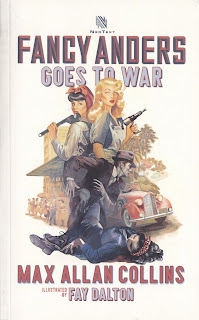The Forward to this volume, by noted comic book writer and western author Chuck Dixon sets the proper tone of enthusiasm for the genre as a whole. Justin Marriott himself provides a thoughtful introduction while three more informative and addictive essays are also included: Paul Bishop examines ten of his favorite western authors, Howard Andrew Jones takes a deep dive into westerns in the Gold Medal line and Gary Dobbs provides a thorough analysis of Larry McMurtry’s Lonesome Dove Saga.
The reviews themselves are organized chronologically with major divisions by “era” beginning in 1927 all the way to modern day westerns. You’ll find everything from stand-alone classics to western series, adult westerns, weird westerns, and even the comics. Each is granted a rating by the reviewer and of course, not all will agree, but there-in lies an extra bit of fun when reading them. I found more than a few that I at first disagreed with but the text of the review sells their rating and now has me thinking I might revisit them to see if my own opinion might change.
This is a fairly hefty product, especially considering the price. Most of the reviews are accompanied by black & white cover photos of the original publication and that in itself can be a fun way to browse. One note of caution however: readers might well find themselves significantly expanding their wish lists for future reads so check your bank account before delving in.
** On a side note, I feel a little conflicted about reviewing this product at all since I have ten or so reviews in here myself. My words above reflect all the other content in the book, and I would feel the same even were I not included. Nevertheless, it was an honor and a privilege to contribute to the effort. **


































